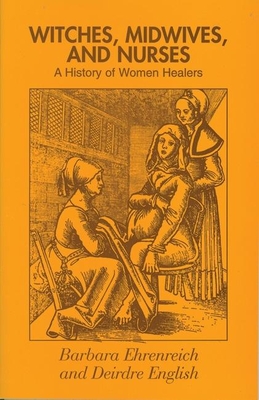Witches, Midwives and Nurses: A History of Women Healers
Barbara Ehrenreich

I read this after seeing mention of it in a cool Lithub profile of the radical bookstore Firestorm Books in Asheville, NC, in which the owners mentioned it was their best-selling title in 2018. The owners compared it to a simpler version of Federici’s “Caliban and the Witch,” which I have been interested in reading, but which isn’t available from either of the libraries I use regularly–so I checked this out from the library instead. It’s quite short, more of a pamphlet than a book, really.
I read the recent re-issue edition from The Feminist Press at CUNY, which has an interesting foreword by the authors reflecting on the genesis of the book and the circumstances of its publication. I thought this alone was worth reading–it was a fascinating window onto the women’s health movement of the early 1970s (which produced the famous “Our Bodies, Ourselves”) and the grassroots efforts of a couple of college teachers who scraped together what information they could find and self-published a pamphlet that they distributed in diaper boxes.
Although Ehrenreich and English acknowledge, in the foreword, some weaknesses and inaccuracies in their original analysis–likely inevitable given the extremely limited scholarship available at the time–overall they say they are surprised at how well the analysis has held up over the ensuing decades. Their primary argument is a class- and gender-based analysis of the process, in Western Europe and the US, by which society removed recognition of the medical expertise of traditional healers (who were largely women) and limited it to professionally-recognized men (who were almost all men), and in the process created the gendered and (at least originally) de-skilled role of nurse.
In particular, they set out to dispute the just-so story that traditional healers were people of unscientific superstition (“old wives' tales”), who were replaced by professionals when scientific medicine came along. In fact, E&E argue, the “professionalization” of medicine and stigmatization of traditional healers began, and was largely completed, long before medicine developed any real scientific character–while it was still the domain of leeches and the four humors. Furthermore, they argue that traditional healers were at least quasi-scientific in the sense of being empirical, as contrasted to the ineffective theoretical ideas of contemporaneous professionals–and in fact, for this reason, were perceived as a threat to the church, which favored theistic ideas around illness and recovery.
I’m clearly in no place to judge the arguments independently, but they struck me as very believable. Things have improved a lot since the era of the book’s publication, both in terms of the representation of women in medicine, and the availability of information about women’s bodies and health. But the legacy has by no means been erased, as is obvious from current articles about biases in diagnosis and treatment of women’s pain, maternal morbidity in the United States, and racial biases in health care delivery. This book is, I think, a good example of history as a radical discipline. We can see, from a sufficient remove, the obvious injustices and biases of both the historical era under study and the one in which it was written. Reflecting on these should lead us to think more carefully about current injustices and biases that we may otherwise be quick to dismiss or disinclined to confront.